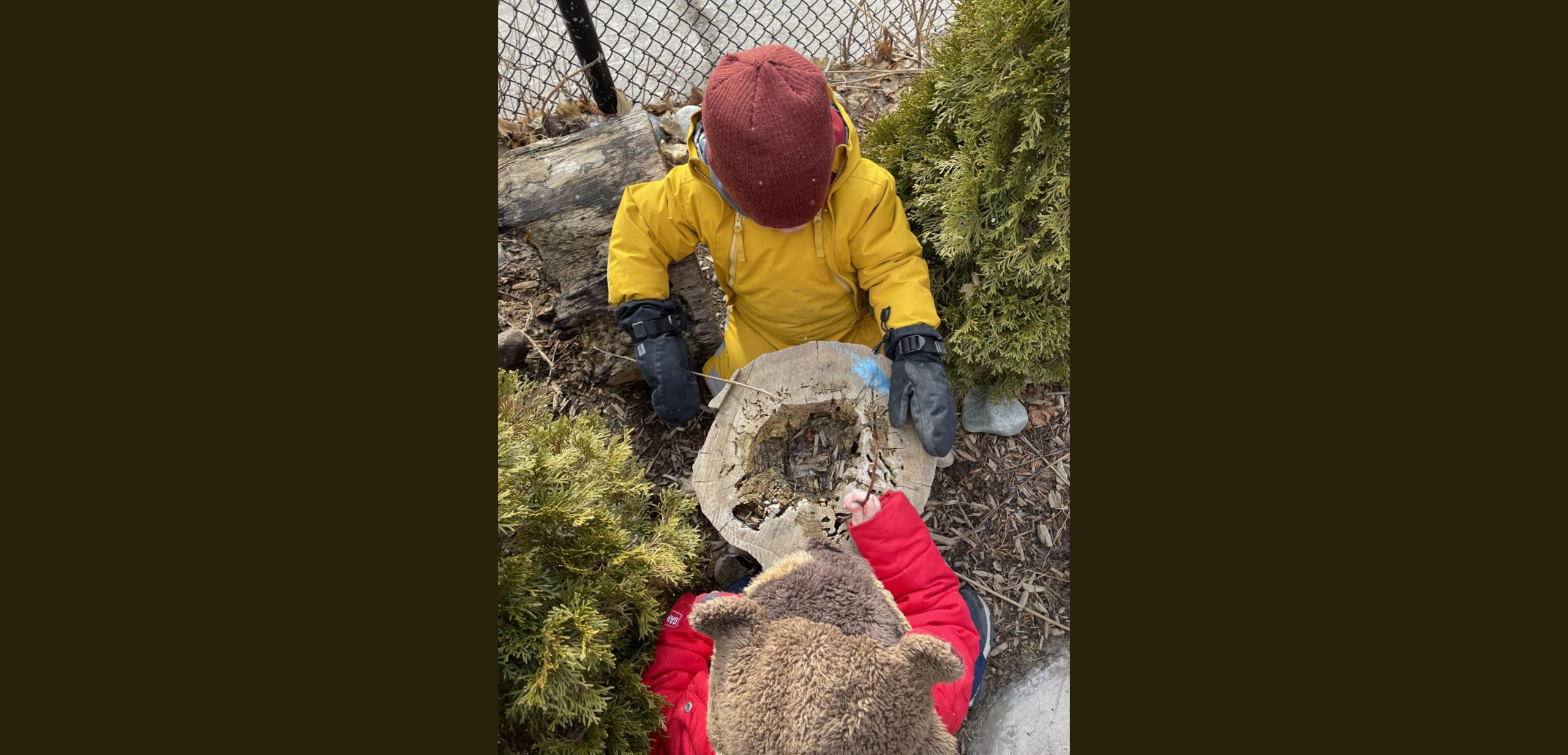
Learning From Indigenous Perspectives: Well-Being in the Early Years
Thank you to Dr Monica McGlynn-Stewart, professor at George Brown College, for providing this guest post.
In our recent article we discuss a three-year qualitative research study (2020-2023) in which we explored the impact on early years educators’ knowledge, perspectives, and pedagogies when introduced to Indigenous perspectives on Land-Based Learning in 10 urban preschool early learning centres (ages 2.5-4 years). Many young children in urban mainstream early learning centres have limited access to natural outdoor spaces to play and learn, and early years educators typically receive little training in nature-based pedagogy, and even less in Indigenous perspectives on Land-Based learning. Although the research team was mostly non-Indigenous, we were fortunate and grateful to learn from our advisor and team member, Lori Budge, who is an Indigenous faculty member at George Brown College, as well from our workshop speakers who brought teachings from different First Nations.
Methodology
Over the three years of the project, the team held workshops, interviews, shared resources, and held space for regular opportunities to share what they were learning and practicing with others in the project. These engagements were used to explore educators’ knowledge, perspectives, and pedagogies when introduced to Indigenous perspectives on Land-Based .
Findings
We divided the findings into four themes based on Indigenous teachings: engaging with the senses and the heart, All My Relations, gratitude, and reciprocity. It is important to note that the themes are intertwined and unfolded in tandem over the course of three years as the educators learned about and engaged with Indigenous perspectives on Land-Based Learning.
Engaging with the Senses and the Heart
Elder Willie Ermine (Brass et al., 2020) encourages adults to respect children’s perspectives and responses to the natural world, and to resist imposing their adult perspectives. After bringing children out to a natural area he recommends that adults ask them, “what do you see?” and then “how do you feel?”. Adults should encourage children to engage with all their senses playfully and then follow their lead and value their intuition.
Over the course of three years, educators reported new perspectives and approaches as they engaged with the Land through close observation, tactile exploration, emotional connections, and playful engagement. The educators noted that the children hadn’t changed. It was the educators themselves who had changed. They had begun to take more notice of children’s interest and interactions with the natural world and to value and support them differently.
The educators’ interviews at the end of the second year illustrated that there had been a shift from considering nature as a resource that could benefit children to responding to the natural world with empathy. Their understanding of the value of children’s direct contact with nature, in context, led them to a greater focus on outdoor learning.
Belonging – All My Relations
Over the course of the project, educators and children grew in their understanding of the Indigenous principle that humans belong to an inter-connected web with other creatures in nature, both human and non-human, and they have a responsibility to live in a moral manner with all their relations. The educators reported a change in how both they and the children were more focused on their connections with nature and their desire to care for nature.
Gratitude
Gratitude was the Indigenous perspective that seemed to first capture the imagination of both the children and adults in the project. Gratitude was both a result of holistic engagement and a sense of belonging, and an impetus to further engage and connect with the natural world.
Reciprocity
Many educators reported that the children were moving beyond learning about nature to recognizing their connection and responsibility towards the natural world. Children began to be concerned about what the birds, animals, and insects in their playgrounds ate, where they lived, and how they felt. They wanted to care for them by making homes in the snow or soil and by feeding them. This principled approach to the world is part of Traditional Indigenous Education. (Hansen & Antsanen, 2018).
By the end of the third year, it was evident that the children and the educators had moved from considering natural items as resources, to considering what they owe to their non-human relatives. The educators commented that the children were taking greater leadership to care for, and give back to, the plants and animals in their outdoor spaces.
Conclusion
This research increases our understanding of how educators understand Indigenous perspectives on Land-Based Learning, and how they can incorporate Indigenous knowledges and pedagogies into early years programs. Indigenous histories, cultures, and knowledges have been ignored or misrepresented in Canadian culture and education for too long. This research highlights the important contribution Indigenous knowledge and perspectives can play in learning, holistic wellness, and the creation of a more sustainable approach to the environment.
For more information about the project, visit our website https://landbasedlearning.mozaik.global or contact Dr Monica McGlynn-Stewart (mestewart@primus.ca)
References
Brass, D., Ermine, W., & Michano-Courchene, L. (2020, January 8). What is land-based learning? A digital forum. [Video]. YouTube. https://www.youtube.com/watch?v=tOUBbsNswLY
Hansen, J. G., & Antsanen, R. (2018). What can traditional Indigenous Knowledge teach us about changing our approach to human activity and environmental stewardship in order to reduce the severity of climate change? The International Indigenous Policy Journal, 9(3). DOI: 10.18584/iipj.2018.9.3.6
McGlynn-Stewart, M., Maguire, N., Budge, L., Sales, A., & Patterson, E. (2024). Learning From Indigenous Perspectives: Wellbeing in the Early Years. LEARNing Landscapes, 17(1), 213-234. https://doi.org/10.36510/learnland.v17i1.1129)

